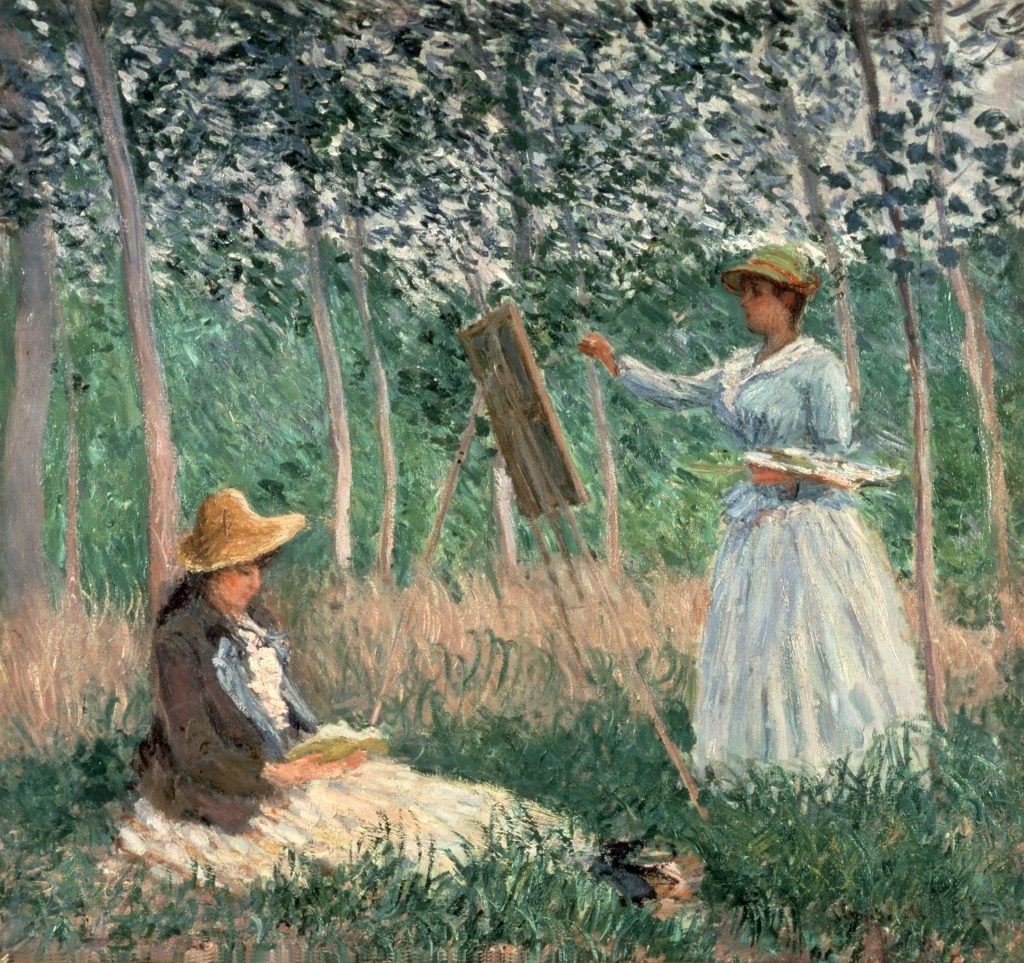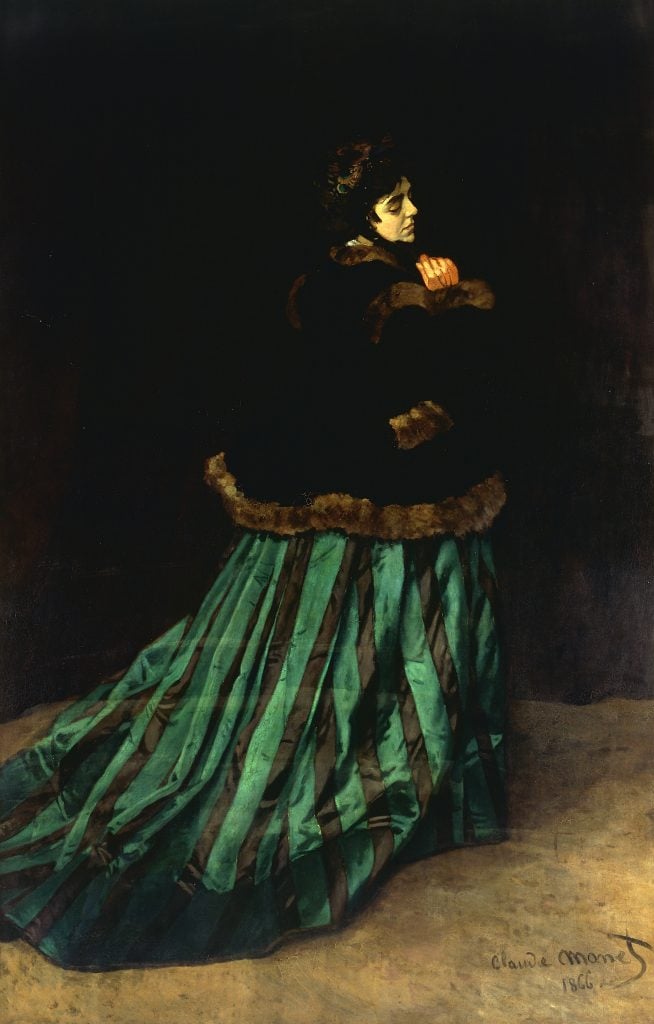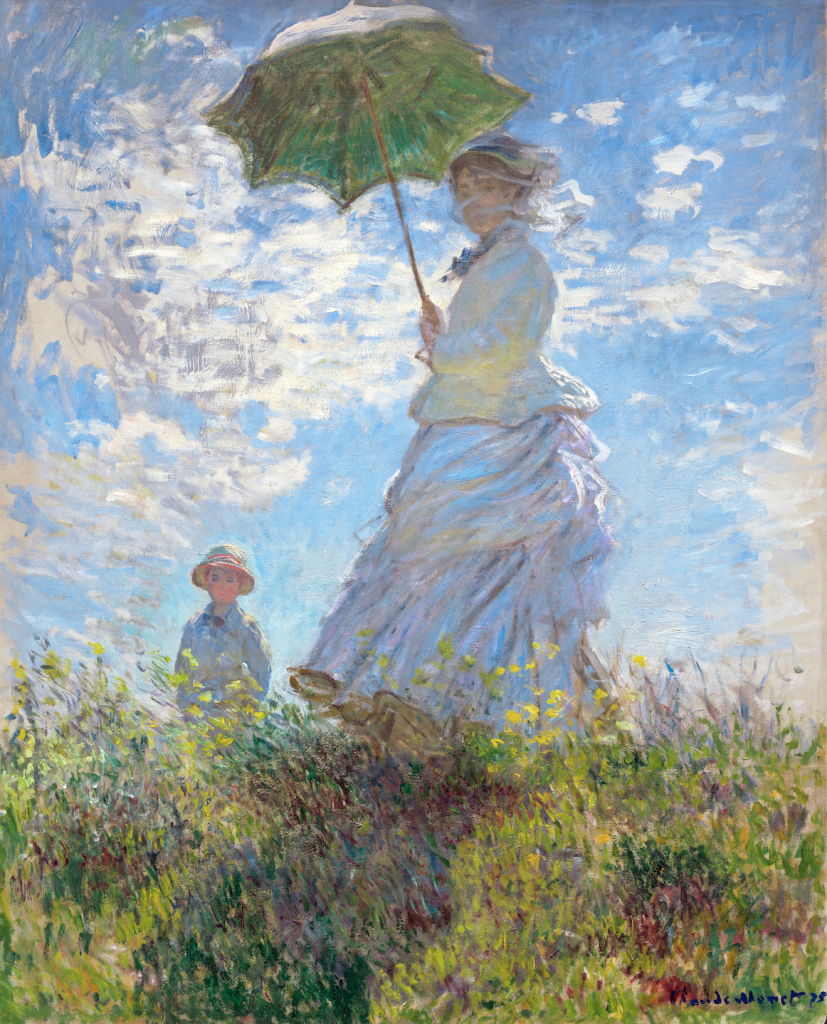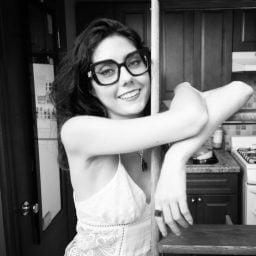Art World
Art Bites: How Women Shaped Monet’s Artistic Journey
The women in Monet's life provided essential inspiration, creative collaboration, and practical support.

Claude Monet’s legacy, often referenced in pop culture cameos and defined by astronomical auction prices, tends to overshadow the artist’s personal life. But, in a new book MONET: The Restless Vision, acclaimed critic Jackie Wullschläger draws from thousands of untranslated interviews found in Monet’s five-volume French catalogue raisonné, bringing the Impressionist’s personal story to the forefront and shedding light on the often overlooked women who influenced his work.
Monet’s most visible muse, Camille Doncieux, appears in early realist masterpieces like Le Déjeuner sur l’herbe (1865-66) and Camille, the woman in the green dress (La Femme à la Robe Verte) (1866), Monet’s standout debut at the Paris salon. Monet began his relationship with Doncieux when she was 18 and he was 25. Her background remains somewhat mysterious: Though Doncieux is believed to have come from modest means, she developed a distinctive sartorial flair that helped Monet engage with the burgeoning interest in modern fashion within the art world. Wullschläger speculates that a shared interest in theater may have brought them together.

Claude Monet, Camille (The woman in the green dress), 1866 Photo: DeAgostini/Getty Images.
Doncieux appeared in countless Monet paintings throughout the 1860s and 1870s. The Restless Vision casts her not as a passive muse, but as an active collaborator in these artworks on the grounds of her modeling acumen. Monet reportedly tried to recreate Woman With A Parasol—Madame Monet and Her Son (1875) decades later with his stepdaughter from his second marriage, but she fainted while trying to maintain the challenging pose originally held by Doncieux.
Money problems dogged Monet’s relationship with Doncieux, both before and after their first son Jean Monet was born in 1867. As Monet and the Impressionists pioneered their movement, he frequently visited the Château de Rottembourg, the lavish estate of early collector Ernest Hoschedé, in hopes of securing sales. There, Monet grew close with the Hoschedé family, including its young matriarch Alice. In 1878, after Hoschedé’s textile business failed and he’d lost his own fortune speculating on art, the Monets and the Hoschedés moved together into a commune in Vétheuil where they lived for several years, pooling resources.

Claude Monet, Woman with a Parasol — Madame Monet and Her Son (1875) (Photo by GraphicaArtis/Getty Images)
There, that same year, Doncieux gave birth to Monet’s second son, Michel. Doncieux died in 1879, following a prolonged illness. Monet, devastated, found his grief intertwined with a renewed drive to revive his struggling career. His growing closeness with Alice Hoschedé further motivated him to become fiercely entrepreneurial, leading him to re-engage with the Salon in pursuit of financial stability.
Monet painted Hoschedé several times, but found himself moving his focus towards landscapes. Unlike Doncieux, who served as a more pliable muse, Hoschedé’s presence influenced Monet’s work in a different way. Her strong, self-assured personality and emotional intensity were reflected in the dramatic, turbulent seascapes he created during this period. This shift in Monet’s artistic style highlights how each woman in his life uniquely impacted his creative evolution.
Monet and Hoschedé moved to Giverny in 1883, but the couple only married in 1892, the year after Ernest Hoschedé’s death, likely due to the complicated social and financial circumstances surrounding their relationship. Monet counted Alice as his staunch supporter and soulmate until her death in 1911, which once more plunged him into mourning. Jean Monet married Blanche Hoschedé in 1897; she was the most dedicated of Monet’s stepdaughters in assisting him with his work.
Jean Monet perished prematurely in 1914, and Blanche, who moved in with Claude Monet afterward, played a significant role in his life and art during his final years. Her presence provided Monet with both emotional comfort and practical support. This period of personal and professional renewal led to Monet’s creation of his most grandiose Water Lilies series. Blanche’s dedicated care and companionship likely helped Monet to focus on his monumental work, while her appreciation for his art may have fueled his creative drive. Her influence and support were crucial as Monet undertook this ambitious artistic endeavor.
Monet may have been the greatest artistic talent of his era, but history is beginning to reveal that his success was significantly shaped by the crucial contributions of those around him, particularly the women who influenced his life and art.
What’s the deal with Leonardo’s harpsichord-viola? Why were Impressionists obsessed with the color purple? Art Bites brings you a surprising fact, lesser-known anecdote, or curious event from art history.





